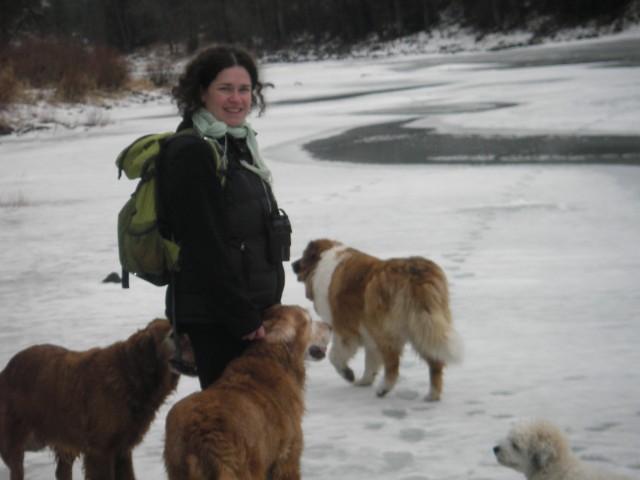Conservation, collaboration, and data gathering new focus for Granby Wilderness Society
In a gradual shift from strict advocacy to environmental stewardship, the Granby Wilderness Society (GWS), once known only as the protector of the Granby River headwaters and its grizzly bear population, is now active on several fronts across the Boundary Region. While the grizzlies haven’t been neglected as work continues to encourage a recovery plan for the bears, Jenny Coleshill, a biologist and the new co-ordinator of the society, is steering their work on a different course.
Several projects from determining the movement patterns of animals crossing Highway #3, leading bird counts, saving Tiger Salamanders and other species at risk, to initiating restoration projects, are keeping the society very busy. Coleshill’s work for GWS includes starting environmental projects as well as acting as a liaison between community groups and governments at the local, regional, provincial and federal levels.
“Conservation will not work unless all the stakeholders are on board,” says Coleshill. “We must work with everyone and form partnerships to achieve the best results for the region. I’m a biologist first, and the society believes that we need to remain objective and unbiased in our conservation efforts. We need more data and science to help make a difference.”
GWS is actively seeking new members to help develop their conservation projects. “The society should be a platform for people to contribute to conservation, foster stewardship, and bring in ideas for future projects. With more members we will have a wide variety of perspectives and opportunities for partnerships,” says Coleshill.
Coleshill focuses her energies on putting together new conservation projects around the region. Two key projects for 2010 are the River Watch and Road Watch programs. Water testing along the Granby and Kettle Rivers, the River Watch project, will be done with the help of student volunteers from local elementary and secondary schools. Valuable baseline data will be gathered that communities in the watershed can use as they monitor the rivers well into the future. The Phoenix Foundation has agreed to fund the purchase of the test kits, and the RDKB is sponsoring the project. River Watch is a platform for young people to learn more abut their environment.
GWS is also working in partnership with the Miistakis Institute, a non-profit corporation based in Calgary affiliated with the University of Calgary that undertakes and supports pure and applied research respecting the ecosystems of the Rocky Mountains and surrounding regions. A project that the institute did in the Crowsnest Pass will be replicated in the Boundary. Road Watch uses citizen science to determine where wildlife is crossing roads by asking people who regularly travel to note where the wildlife crosses and enter the information on a website. A data base of wildlife crossings will eventually be created.
“This data is essential to highway planning and mitigation efforts, and it can be used to prevent highway mortalities as well,” says Coleshill. “These projects aren’t just about the animals; conservation is an investment in our long-term economic goals for our communities.”
To participate in these exciting new conservation projects, people can join the GWS by visiting its new website at www.granbywilderness.ca, or by contacting Jenny Coleshill at jenny.coleshill@granbywilderness.ca or by phone at 250-442-7969.






















